Our load securing experts
How can we help you?

Do you need help on how best to transport a particular load safely? Contact our cargo securing experts - they will be happy to help.
Contact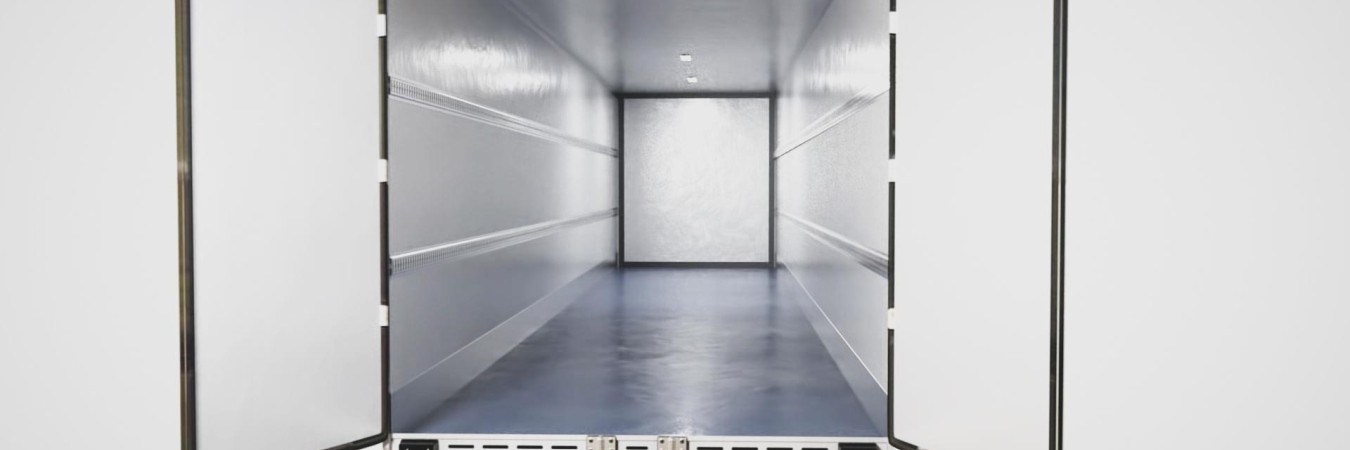
European best practice guidelines on securing cargo for road transport set out a number of principles for loading trucks, trailers, swap bodies and others.
In addition to the requirement that the cargo unit be clean, dry and safe, the following general rules apply:
- The bulkhead must be serviceable (undamaged and strong enough)
- The support of a curtain must be serviceable and all planks must be in place
- Wear and corrosion of the lashing points should always require inspection
- Sufficient anchor points must be available on the vehicle
- Lashing equipment must be undamaged, clean and serviceable
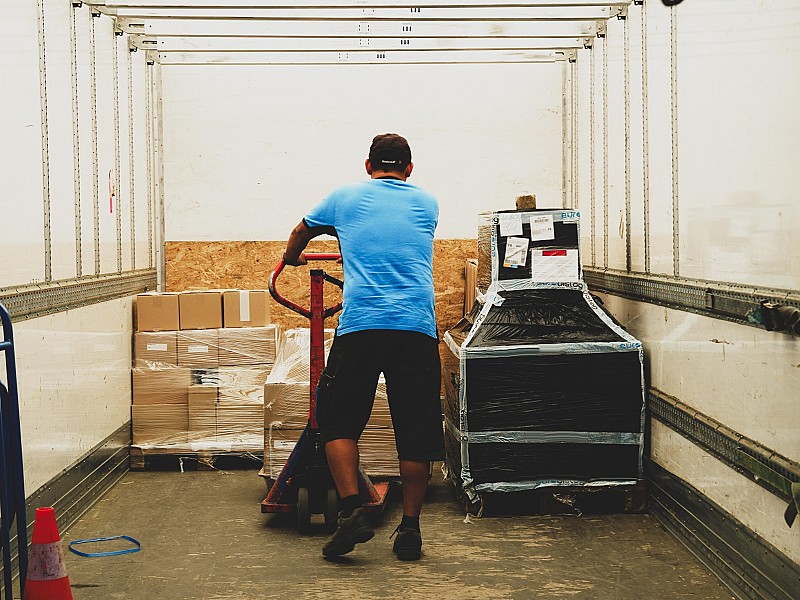
First of all a general warning: Tools and other accessories on a truck are considered cargo and it is therefore considered part of the driver's responsibilities to ensure that they too are transported completely safely! Loose material in the loading area of trucks without tailgates can cause very serious accidents. Even the smallest tool can become a lethal projectile at the high speeds that occur on the highway! Not to mention loose chains.
It is recommended to store them in a separate room, but preferably not in the driver's cabin. Additionally, all subframes, cranes, tailgates and other should also be stowed and locked in accordance with the vehicle manufacturer's instructions.
The bulkhead is the front part of the vehicle. As explained, the greatest forces occur when braking, 80% of the weight of the load minus the frictional resistance of the goods in the load compartment.
The bulkhead of trucks and trailers with a maximum permissible weight of over 3.5 tonnes must be designed according to European norm EN 12642. This states that the bulkhead must be capable of withstanding a forward force of 40% of the vehicle's payload, with a maximum of 5,000 daN.
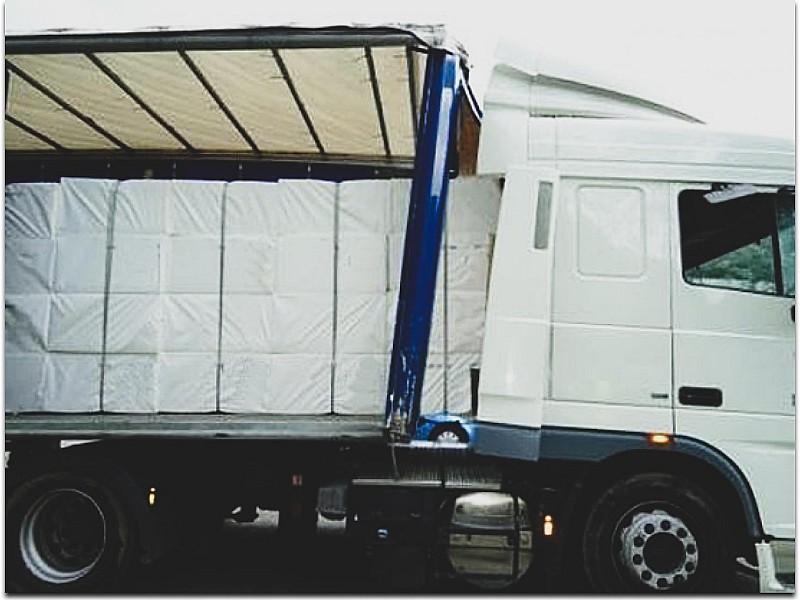
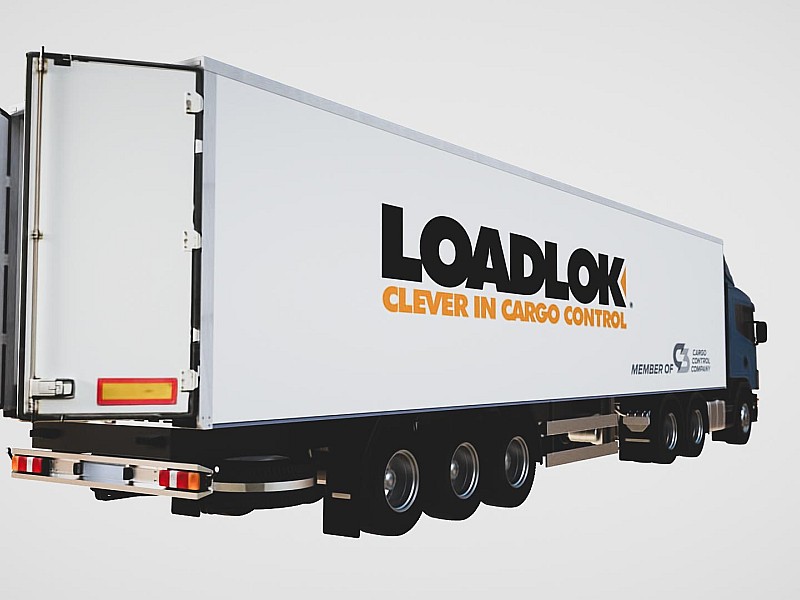
European norm EN 12642 stipulates that the sidewalls of trucks and trailers with a maximum permissible weight of over 3.5 tonnes must be able to resist the force equivalent to 30% of the payload. When securing the load with lashing straps, for example, it should therefore be carefully considered whether these are also capable of sufficiently absorbing the side forces. This rule only applies to flat sides of cargo units. A force transmitted by a packaging unit such as a box or a stacked pallet against a flat wall is distributed over the entire surface.
The force exerted by a protruding part, for example, concentrates on a single point. If only a pointed protrusion is sharp enough, it will be able to pierce even through the steel wall. This means that goods that do not have flat walls, such as machinery, should always be secured so that they cannot touch the wall.
ISO containers are increasingly used in road transport. A common misunderstanding is that these would be strong enough to withstand longitudinal and transverse forces anyway. This does not have to be the case!
The side walls of steel containers and box trailers, which are trucks or trailers with hard walls, can absorb greater forces than the walls of curtainsider trailers. The sidewalls on covered trailers or tipper trailers can only be used for absorbing forces to a very limited extent, unless they are XL-approved. Read more about Roland curtains with XL certificate here.
According to European standard EN 12642, these walls must be able to withstand a horizontal force of 30% of the payload, but here this force is distributed. The rigid part of the wall, called the sidewalls, must be able to absorb 24% and the part above it, usually a combination of vertical pillars and horizontal planks, must withstand the remaining 6%.
Trailer curtains play no role at all in absorbing the forces. They only serve to cover the load. It goes without saying that the planks must be in perfect condition. They must not have been damaged in previous transports and the wood must not contain any grains that affect its breaking strength.
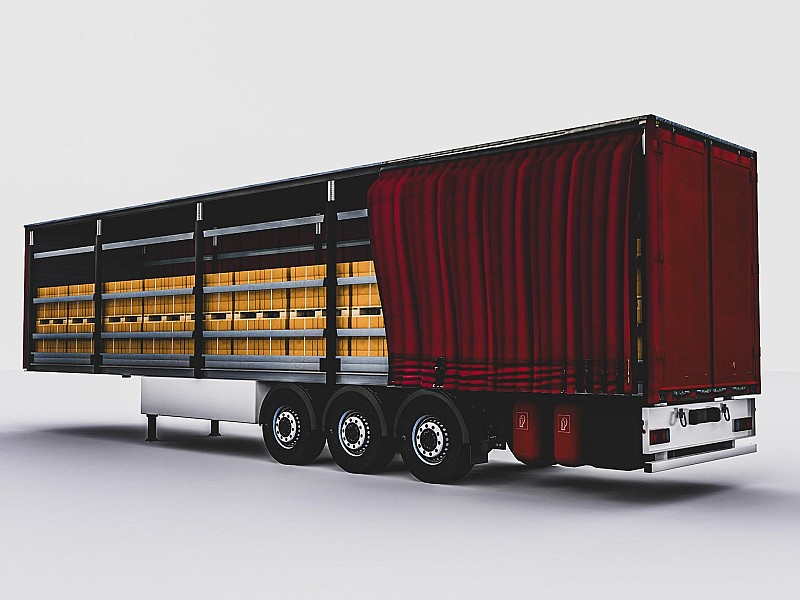
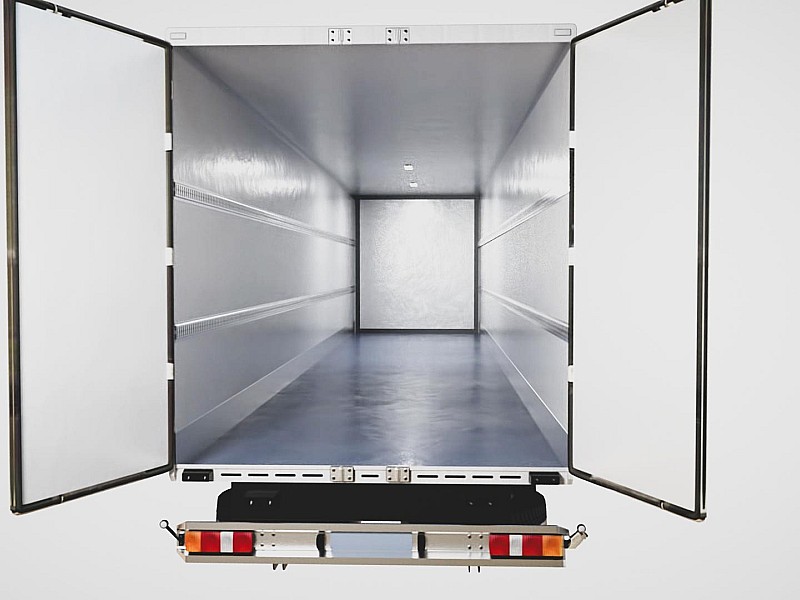
The rear wall must also be designed in accordance with European directive EN 12642. This prescribes that the rear wall of a truck or trailer must be able to resist the force equal to 25% of the payload, with a maximum of 3,100 daN. When the truck or trailer is loaded form-closure, no load may fall out when the doors are opened. When pallets are individually wrapped in, for example, foil or strapping, this risk is not so great, but when the load carrier is filled with, for example, boxes stacked on top of each other, this risk is actually very high. Additional protection will therefore have to be provided immediately behind the door in the form of straps, netting or beams. At that point, the resistance of the rear wall no longer applies, but that of the device used.
The walls, floor and roof of the vehicle can be fitted with tracks to which lashing straps, poles, beams and others are attached. The main advantage over lashing eyes is that there are more attachment points, but their strength is often less. Floor rails can be used for securing triangular chocks used to hold round load units, such as rolls of paper and steel coils, in place. Lashing down with a lashing strap is then usually sufficient to safely secure the load.
With the most extensive range of tracks, you will always find a solution for every type of transport at LoadLok.
Find your solution
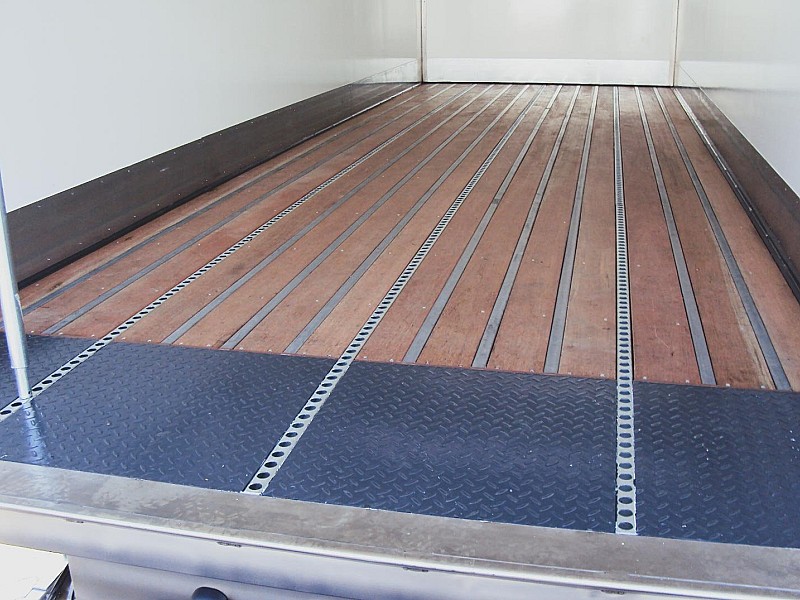
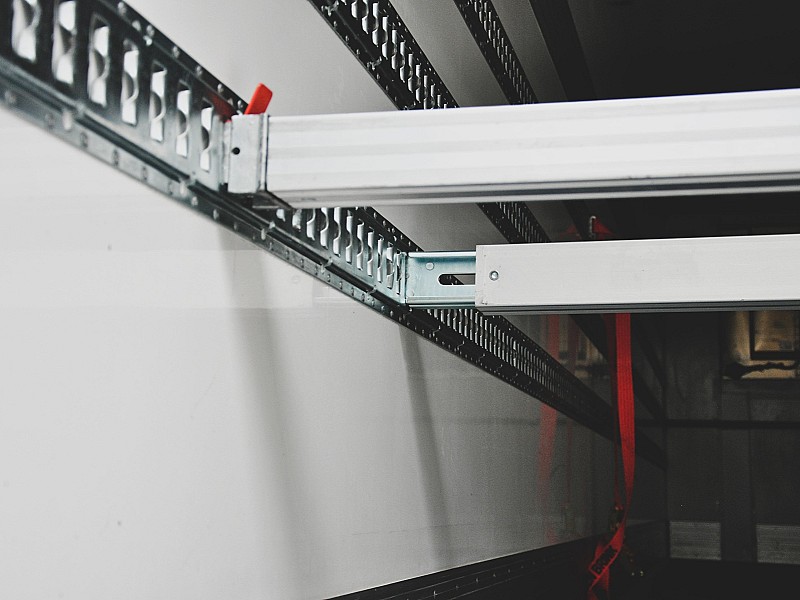
Especially in urban and regional goods distribution, it regularly happens that the cargo space is no longer completely filled. Eventually, only a few boxes may even remain, but even these still need to be properly secured. Tools for this are adjustable beams that can be used to bridge large clearances in a loading unit. These beams require caution. They must be installed with sufficient stability and must not be loaded beyond their capacity, otherwise they will damage and possibly break. Particularly in distribution, dividing the loading space into segments is a better solution. Each segment can then be properly filled with goods.
For curtainsiders trailers Cargo Planks or Kargo Keepers can be used. When applying all these devices, pay attention to the forces they can withstand. Often they are not capable of taking a really large load. In fact, they are only suitable for transporting light goods. When heavier goods are transported in a not fully loaded vehicle with a flat loading floor, block lashing is unavoidable in most cases.
Pillars are vertical metal beams along the side walls of curtain trailers, for example. They are intended to support loads and carry the roof. They can be lightweight aluminium pillars that help stabilise the load and robust metal pillars capable of holding heavy rolling loads such as tree trunks in place. The pillars can be adjustable or movable.
The forces exerted on the sidewalls are generally lower than those in the longitudinal direction, but a combination of pillars and planks on a covered or curtainsider trailer generally cannot take much, unless it has the XL certificate.
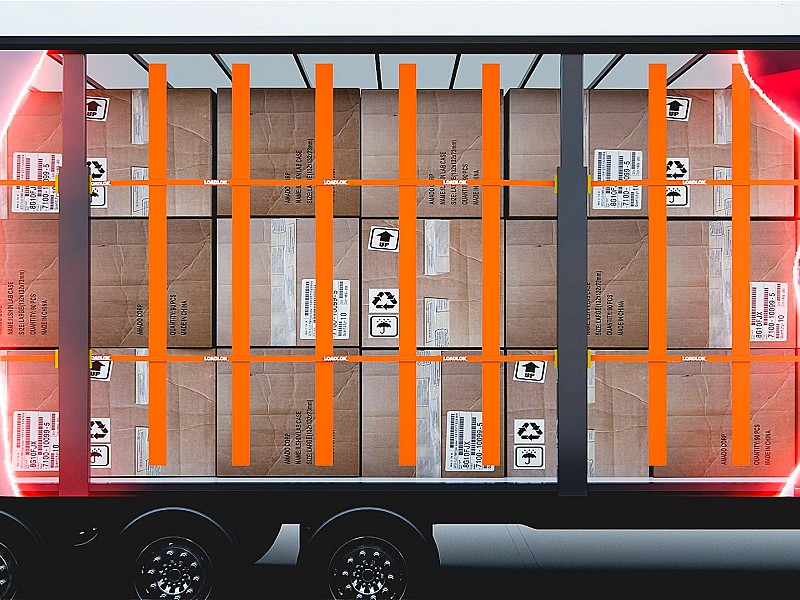
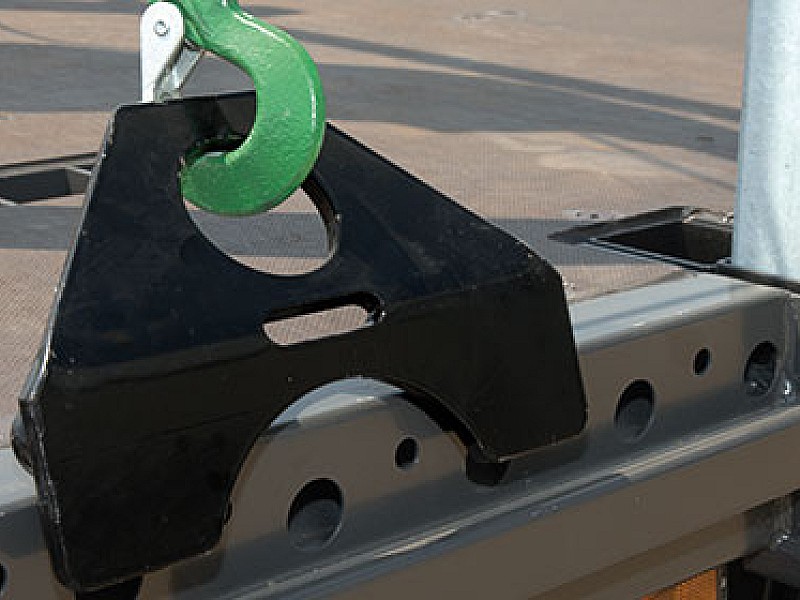
Straps, chains and other securing devices can be attached to anchor points, also called lashing eyes, lashing points or lashing eyes. All mass forces created by the movement of the vehicle and not absorbed by friction end up at these anchoring points.
It is therefore obvious that not only the lashing straps, but also the anchor points must comply with technical standards. The applicable European standard for this purpose is EN 12640-2000. An anchor point is considered part of the vehicle. Once fitted to the vehicle, they must be able to withstand certain forces associated with the maximum authorised mass (MTM) of the vehicle according to the list below:
| Towing force | Maximum Permitted Mass (MTM) |
|---|---|
| 400 daN | < 3,5 t |
| 800 daN | 3,5 – 7,5 t |
| 1000 daN | 7,5 – 12 t |
| 2000 daN | > 12 t |
Attaching several lashing straps to a lashing point is in itself not prohibited, but care must be taken to ensure that the total load of the lashing straps does not exceed the capacity of the lashing point and that there is sufficient space for the hooks of the lashing straps.
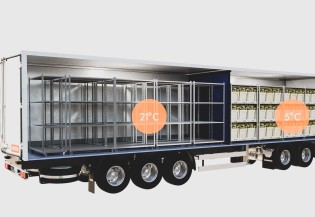
Find every download related to IsoLok: User Manuals, Mounting Instructions, Product Information and Brochure.
Read more
As a transport company, you know that ensuring the safety of your cargo is evident —not just for operational efficiency but also to comply with regulations.
Read more